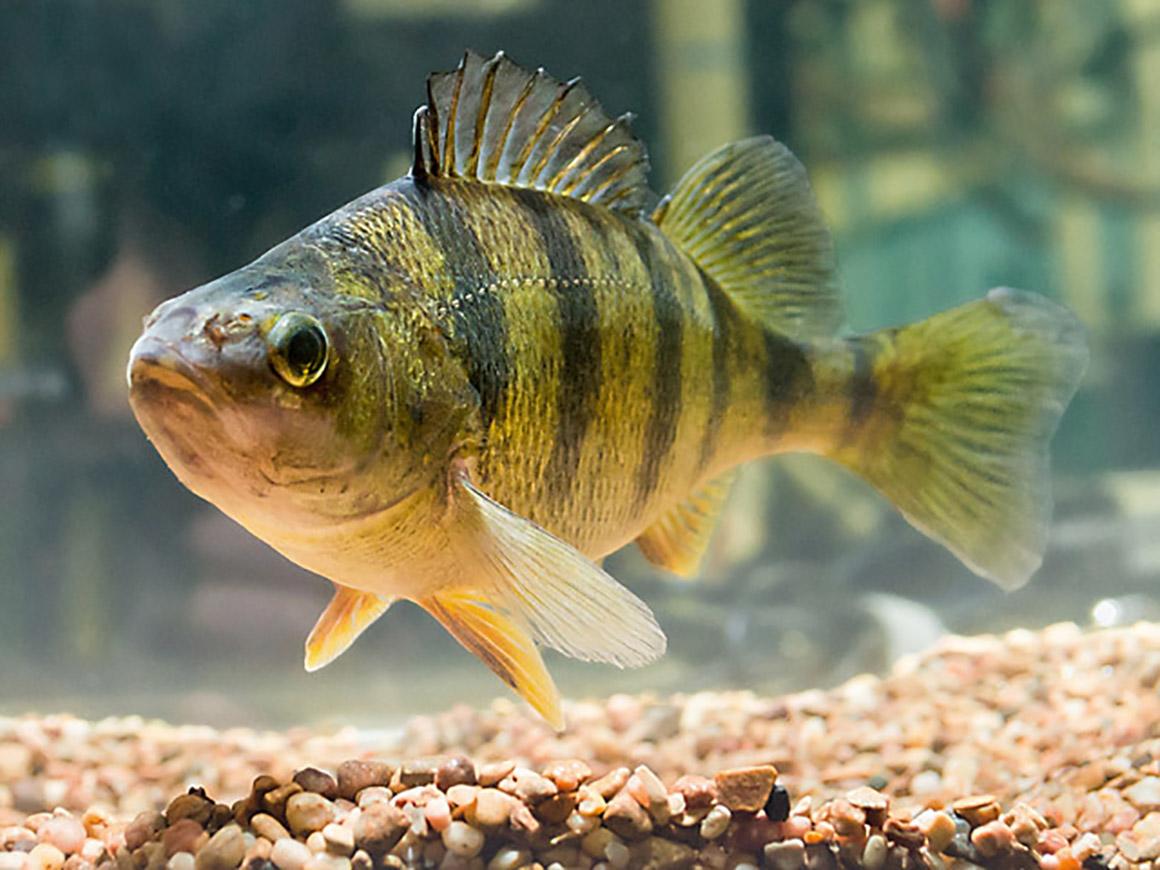“Many Minnesota fish farmers are looking for a species that has a much higher market value than Tilapia; Yellow Perch might fill that niche,” said Amy Schrank, MNSG fisheries and aquaculture extension educator and project lead. “Minnesota Sea Grant has been actively engaged with Minnesota fish farmers since 2017 and raising Yellow Perch is one of the problems they asked us for help with.”
Yellow Perch, also known as Lake Perch, has a mild, sweet flavor with firm, flaky white flesh. They are highly sought after by ice anglers, according to the Minnesota Department of Natural Resources.
“Consistent availability of juvenile Yellow Perch, called fingerlings, has limited Yellow Perch aquaculture in Minnesota and the Great Lakes region and these limitations became more severe during the COVID-19 pandemic,” said Schrank.
MNSG’s Yellow Perch project is funded by a $134,879 grant from the National Sea Grant Office and is one of 13 nationwide projects designed to address ongoing and long-term impacts associated with the COVID-19 pandemic on seafood resources, including aquaculture and the connection between aquaculture and wild-caught fisheries.
“We are partnering with a Yellow Perch producer from Minnesota to compare methods and costs of rearing Yellow Perch in two different styles of indoor, biosecure production systems,” said Schrank. “We will compare fish growth, mortality rates, and production costs between systems for both fingerling and market-size fish.”
The two types of indoor fish-rearing systems the project will compare are a flow-through and a recirculating aquaculture system or RAS. The main difference between the two systems is that in a flow-through system the water is not reused and in a RAS the water is filtered and is reused within the tank. The two test systems will be located on the University of Minnesota St. Paul campus.
“Moving production of Yellow Perch from outdoor pond rearing to indoor RAS could increase overall production, increase growth rates, and expand the season when fresh Yellow Perch fillets would be available to consumers,” said Schrank. “We hope this project will also help increase the availability of biosecure fingerlings that fish farmers need.”
Once the project is complete, the project team, which includes Don Schreiner, Minnesota Sea Grant fisheries specialist, and Marie Thoms, communications manager, plans to develop and distribute a guide and outreach materials for producers on how to raise Yellow Perch that describe best practices and cost estimates for production in RAS.
CONTACT:
Amy Schrank, fisheries and aquaculture extension educator, Minnesota Sea Grant, University of Minnesota and University of Minnesota Duluth, aschrank@umn.edu.
Don Schreiner, fisheries specialist, Minnesota Sea Grant, University of Minnesota and University of Minnesota Duluth, schr0941@d.umn.edu.
Marie Thoms, communications manager, Minnesota Sea Grant, University of Minnesota and University of Minnesota Duluth, methoms@d.umn.edu.
Image credit: Robert Colletta/U.S.Department of Agriculture, Agricultural Research Service.
